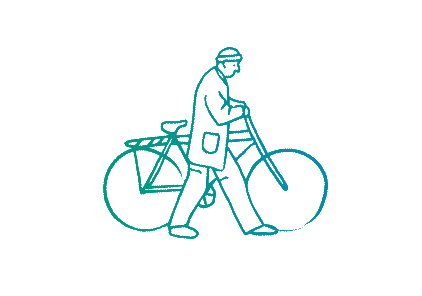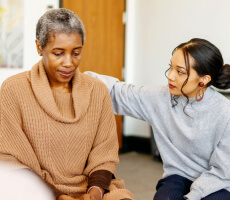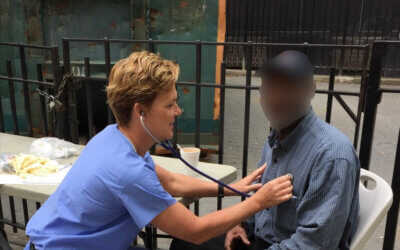Raising Heart Disease Awareness
Discover the importance of raising heart disease awareness in both women and men as National Heart Month is February.
 What happens exactly during Heart Month? It is time devoted annually to raise awareness of heart disease, the number one killer of women and men in the United States.
What happens exactly during Heart Month? It is time devoted annually to raise awareness of heart disease, the number one killer of women and men in the United States.
Heart Disease and Valentines in February
The inaugural American Heart Month took place in 1964 thanks to a proclamation by President Lyndon B. Johnson. By joint resolution, Congress ensured that in future years, every President of the United States would officially announce February as Heart Month in order to raise heart disease awareness.
What happens exactly during Heart Month? It is time devoted annually to raise awareness of heart disease, the number one killer of women and men in the United States. Every year, the American Heart Association, in conjunction with the Centers for Disease Control and Prevention and National Institutes of Health, reports on current heart disease statistics across the country. Their findings are quite staggering.
- In the United States alone, more than 92 million adults are living with some form of heart disease or after-effects of a stroke.
- One in every three deaths in the United States is from heart disease. This means more lives are lost due to heart disease than all forms of cancer and chronic respiratory disease combined.
- Every day, about 2,200 people die from heart disease. This is an average of one death every 40 seconds.
The population that is affected dramatically: women. While both women and men can experience typical heart attack symptoms, such as chest pains and breaking out in a cold sweat, many women also describe symptoms that aren’t thought of when talking about a heart attack. They can have nausea, shortness of breath and/or pain or discomfort in their stomach, shoulders, jaw, neck or back. Unfortunately, women shrug off the warning signs and attribute these symptoms to something else entirely.
The following are statistics for women and heart disease.
- After experiencing their first heart attack, women age 45 and younger are more likely than men to die within a year.
- If a woman thought she was experiencing any heart attack signs, only 65 percent would dial 9-1-1.
During the last 15 years, education for women about heart disease risk has increased due to the Go Red Movement and National Wear Red Day, which takes place this year on Friday, February 2. However, even more needs to be done, particularly when it comes to prevention.
The American Heart Association has an initiative in place called “Life’s Simple 7®,” which looks at seven measures designed to improve the heart health of people living in the United States. The goal is to get more Americans heart healthy by reducing death from heart disease and stroke by 20 percent in two years. The 2020 Impact Goal tracks the following: control of cholesterol, blood pressure and blood sugar, not-smoking, physical activity, healthy diet and body weight.
At Risk for Congestive Heart Failure
At Chapters Health System and its affiliates — Chapters Helath Hospice, Good Shepherd Hospice, Hospice of Okeechobee, HPH Hospice and LifePath Hospice, we have seen a steady increase in patients with chronic congestive heart failure (CHF). It is a type of heart disease that cannot be cured. The pumping action of the heart is inadequate, causing blood to back up into the lungs. This makes it difficult to breathe (left-sided heart failure). Blood also backs up into the veins, causing swollen legs and feet (right-sided heart failure).
According to Emory Healthcare, nearly 5 million Americans are currently living with this form of heart disease, and approximately half a million new diagnoses are made every year. CHF is the primary diagnosis in 875,000 hospitalizations and most common in patients who are 65 years or older.
For CHF, the Cleveland Clinic reports this type of heart disease occurs in men and women equally, and the prevalence is higher in African-Americans, Hispanics and American Indians than in Caucasians. And the America Heart Association claims that 53,000 Americans die from CHF every year.
How Chapters Health System Can Help
At Chapters Health System, we recognize the unique needs of patients with heart disease such as CHF. Our At Home with CHF program was specifically developed to meet those needs and help patients decrease unwanted hospitalizations.
Our At Home with CHF program includes the following for patients diagnosed with CHF:
- Initial and ongoing education is provided to patients and families to assist in controlling the symptoms of CHF. Patients can therefore remain more comfortable wherever they call home.
- Patients receive a form and scale to record their weight. In addition, check-in calls are made to find out if patients have gained weight or had any change in symptoms.
- Patients also receive a color-coded tool that helps them “grade” their symptoms so they know when to call for help.
- Patients have 24/7/365 access to the nursing hotline for immediate assistance with any change in their CHF symptoms, such as difficulty performing daily activities; increased shortness of breath; tightness in the chest; swelling of the feet, ankles or abdomen; and a rapid weight gain in one day of 3 pounds.
In addition, our hospice nurses are equipped to anticipate the needs and symptoms of CHF patients.
Chapters Health System is committed to serving the needs of its patients, families, caregivers, health providers, partners and communities.
Discover more details and information about care for patients with heart disease.
For more information, please call our helpful Chapters Health and HospiceHelp24® team at 1.866.204.8611 or Contact Us.
Keep Exploring















